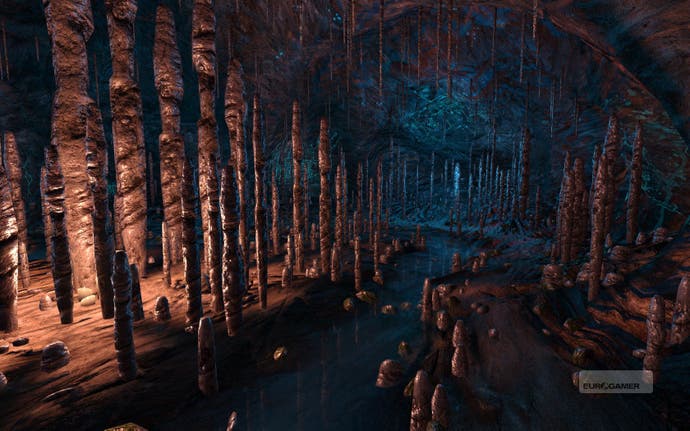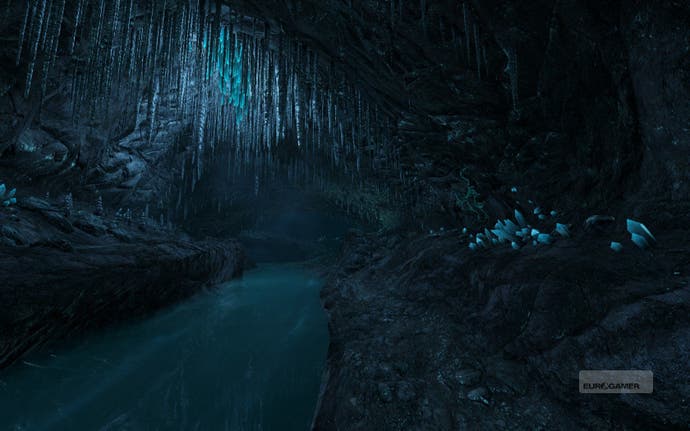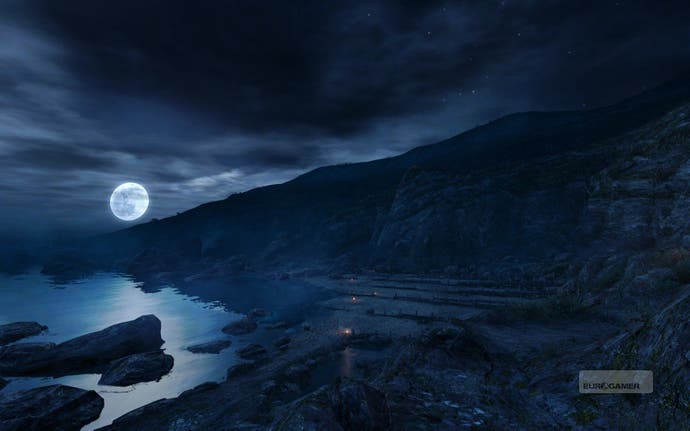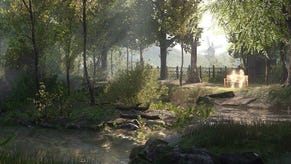Dear Esther Review
Read letter day.
An argument has been raging among the judging panel of the Independent Games Festival. The flashpoint: whether the moody mystery narrative of Dear Esther constitutes a game at all.
What, no high-score table? Where are the guns? Dialogue trees? How do I level up? Surely there's some sort of keycard puzzle? In fact, no. There isn't even a button for interaction. You can't run or jump. You move through the environment - a wind-blasted Hebridean island - simply observing and absorbing. The only puzzle is the obscure, lyrical narrative itself.
Formerly a Half-Life 2 mod by university lecturer Dr Dan Pinchbeck, and now given an extremely fancy refab at the hands of Mirror's Edge artist Rob Briscoe, Dear Esther is a first-person experience and uses many of the narrative tricks familiar to Valve's games, silently building a story through the careful drawing of the world around you.

The major addition here is an intermittent voiceover, which slowly assembles a moving tale of desolation and loss through a series of letters addressed to the eponymous Esther. As you move from one place to another, they describe the island and its mysterious and tragic history, skirting around the events that brought the writer to this derelict place.
Barring a few dead ends and switchbacks, your journey is a linear one. You can wade off into the sea, should you wish, but you'll be returned to shore in short order. Otherwise, there are no distractions from the trammels of the narrative, and little to break its spell.
Is that weakness or focus? Given how deftly crafted and complete the illusion of the place is, how controlled its sense of ambiguity, I'd tend towards the latter. As such, giving anything away here that you are explicitly told would undermine the game's singular purpose - and besides, much is left to interpretation. Can you trust the narrator? Is this 'your' voice or another? Asking these questions and answering them is part of your own journey.

While the voiceover haunts your progress throughout Dear Esther's short span of two hours, the island itself does the rest of the narrative heavy lifting. The place is exquisitely constructed, both sonically and visually - glowering skies and rustling grasses evoking something forlorn, beautiful and wild.
Briscoe's achievement is partly technical - wringing the credible naturalism of these heaths, cliffs and caves from the aging Source engine is no mean feat - but it's an aesthetic triumph too, bending this depiction of an island wilderness into a scene of mesmerising psychodrama, where the wash of black waves beneath a full moon or the murky rush of an underground stream echo the increasing hysteria of the narrative. Jessica Curry's score, too, sombrely reflects the player's feelings without oppressively instructing them.
Given the economy of the design, it's remarkable that the island never feels like a chain of levels. Instead, your path winds you round and round, up and over and under landscapes you've seen from afar, always reinforcing the physical connection between these places - and, possibly, your past and future too. Forever winking in the distance is the beacon affixed to the mast of a radio antenna - and from the outset, like Half-Life 2's Citadel, you know it to be your goal: a place that is as forbidding as it is enticing.

Other landmarks are no less saturated in meaning. Each is seeded with telling details about its past, fleshing out the narrator's oblique references, the exact arrangement of what you find and hear changing minutely on each play-through.
The decaying outbuildings of the lighthouse where the game opens are a treasure trove of incidental stories. Some are literal, some symbolic, and others irrelevant. An annotated map of Britain, lying amid the clutter and crumbling masonry, marks some long journey; a Polaroid snap resting upon a grubby radiator pictures a girl standing beside a car; elsewhere a magazine asks the question: "Can sweetness and honesty find happiness together in a yoghurt?"
I'll tell you for free that Dear Esther isn't about yoghurt - at least, not unless I've wildly misinterpreted it - but the process of seeking and sorting through the fragments of the island's past makes for something wholly engaging. Game or otherwise, this is not a passive pastime, but a journey whose meaning rests on the player's alert participation. Only on investigation do these spaces give up their imagery: business clothes folded in a neat pile inside a coastal cave; the wreck of a car clogging up a rocky gully by the shore; a photo of an ultrasound discarded in some tumbledown shepherd's shack.

The devices aren't always so subtle. Ominous phrases, chemical formulae (perhaps a yoghurt recipe?) and mechanical diagrams are daubed on walls - a heavy-handed suggestion of mania. The narrator, too, tends towards a rather obscure and puffily poetic language, dangling explicit plot revelations just out of reach. Tantalising the audience is a fine aim, but suspense feels hollow when there's no other reason for the narrator to be so coy. Meanwhile, the tendency to deploy extended car metaphors occasionally steers the writing into oncoming traffic.
Ultimately, Dear Esther is an interactive fiction - one which you can never derail or change by your input, only interpret. But if the act of interaction seems slight, then the act of interpretation is far more complex, confounding and enriching than in most other games you might care to name.
It's several degrees from perfect. The writing is purple in places and wantonly obscure in ways which will draw accusations of pretentiousness. It may even deserve them. But it's certainly a valuable endeavour - and a sumptuous experience for its stunning appearance alone.
Is it a game? I can't say I know the answer, but I do know that unless you're an IGF judge or a prissy dogmatist who sets out to pedantically define the boundaries of an extremely fluid medium, then you shouldn't really care. All that matters is that Dear Esther is worth your time - and that its two-hour long chill will remain in your bones for a long while after.

















